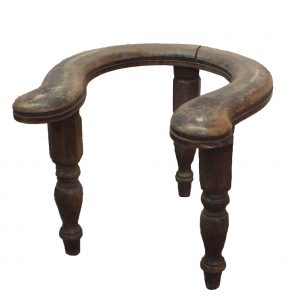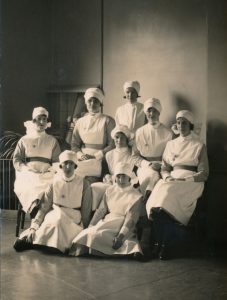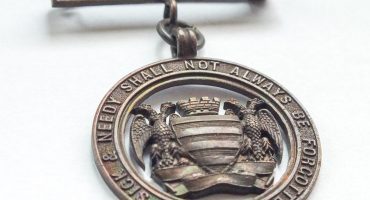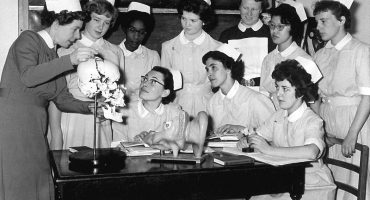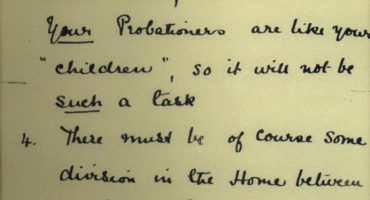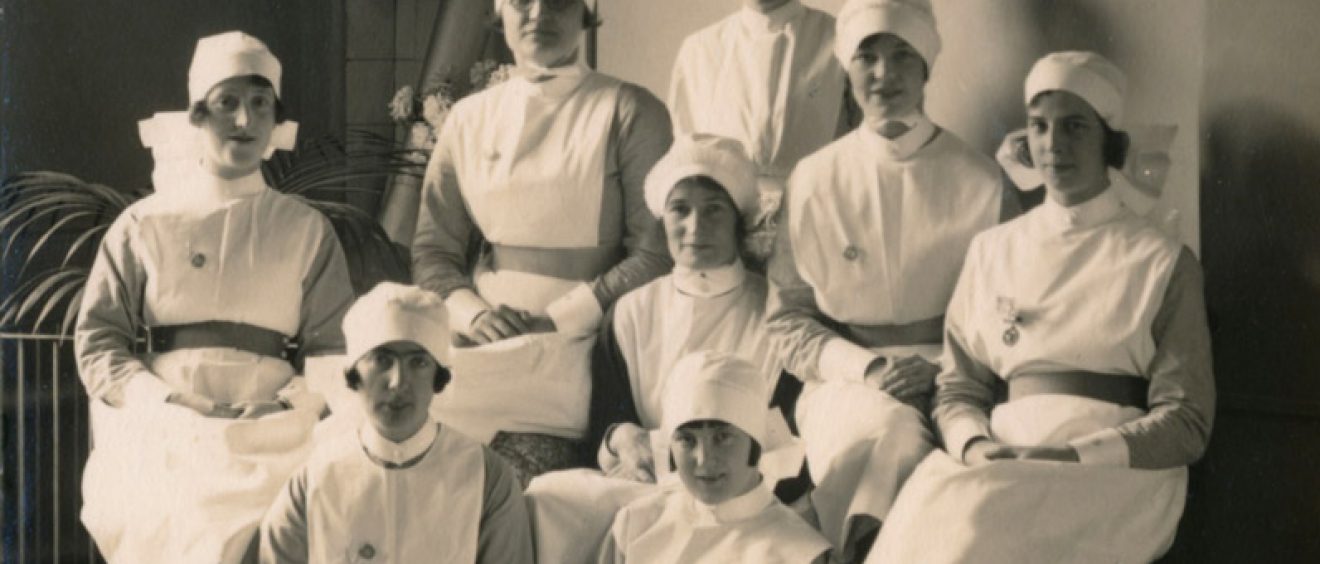
Maternity and midwifery
An historic aid to birthing
In our medical instrument collection is a wooden three legged birthing stool (also known as birth chair), date unknown. It is a device to help women stay in an upright posture to help with childbirth. It’s use can be traced back through the ages and even appears in Egyptian hieroglyphs.
Midwifery students
Also in our collection is a photographic image of midwifery student nurses at Salisbury General Infirmary circa 1930, from the family of Bridget Hedderman who was born 1906 in Carnagill, Kilrush, in Ireland. She came to England in the 1920s and trained for nursing at Salisbury Infirmary. She worked on a variety of wards, including the Accident, Bartlett, Radnor and maternity Beatrice Wards. She trained in 1930 with the first batch of midwifery students on the newly improved Beatrice Ward facilities.
Birth during the war years
During World War 2 Netherhampton House near Salisbury was used for additional maternity beds for Salisbury General Infirmary. This concludes in the 1945 SGI Annual Report saying that the ward was closed on 31st July 1945:
‘The Committee wish to record their gratitude to Sir Bruce and Lady Richmond for their generosity in offering the use of Netherhampton House for post-natel cases during the past five and a half years. To be in such pleasant surroundings during their convalescence was of great benefit to the Patients, and several letters of appreciation were received by the Committee expressing their gratitude. Since the cessation of hostilities the demand for these beds fell off considerably and the Ward was closed on 31st July 1945. During the time Netherhampton House was used no less than 716 Patients were accommodated there.’
Profile on Maternity Services report, 1974
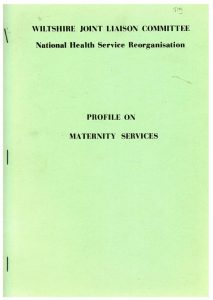
Maternity Services profile report cover, 1974
One of several reports dating from July 1974 offers a fascinating insight into maternity services in the county at the time. The report includes facts and figures about:
- Population
- provision of services
- training midwives
- Midwifery statistics
- health visitors
- relaxation and mothercraft classes
- Live birth and neonatal mortality
- Chiropody for expectant mothers
- Hospital and home births
- School girl mothers
- Care of unmarried mothers
- The Flying Squad
- Family planning
- Rubella immunisation
- Genetic counselling
Some key information from the era:
- 1971 Salisbury catchment area (Salisbury, Amesbury, Wilton, Mere, Tisbury) 19,395 women aged 16-45
years - Salisbury Group Hospital included Salisbury General Hospital (Odstock), Fordingbridge Cottage Hospital
and Westminster Memorial Hospital in Shaftesbury - Training was recently approved for an integrated course, agreed by the Central Midwives Board, for a
twelve month duration and included twelve week community care programme. - 103 midwives practiced across the whole county in 1972
- 1961 home births totalled 32.5% for Wiltshire (total births 4965)
- 1972 home births totalled 8.8% (total births 5190)

